Nestled amidst the enchanting landscapes of Mexico, Queretaro stands as a captivating blend of the old and the new. Its colonial architecture and rich history coexist harmoniously with the vibrant energy of a modern city. From the cobblestone streets that wind through the historic downtown to the iconic aqueduct that stretches across the skyline, Queretaro beckons visitors to embark on a journey of discovery.
But there is more to this city than meets the eye. Beneath its picturesque facade lies a wealth of hidden stories and cultural treasures waiting to be unraveled. Step into the world of Queretaro’s colonial architecture and history, and prepare to be captivated.
This experience made our list of the 4 Best Historical Tours in San Miguel De Allende.
Good To Know
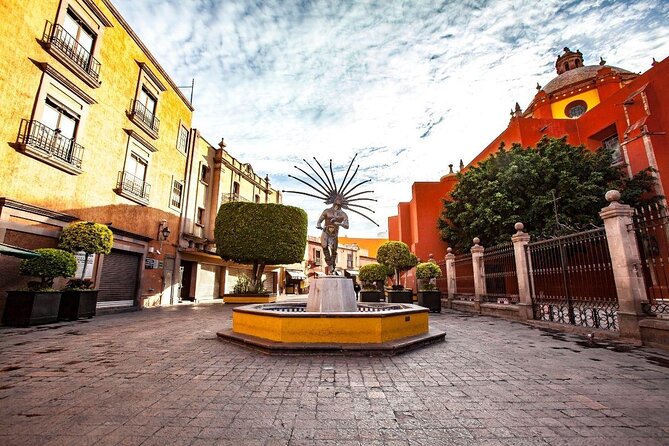
- Queretaro’s historic downtown is a treasure trove of architectural marvels and hidden gems, showcasing a blend of Spanish and indigenous influences.
- The aqueduct, with its 74 arches stretching over 1,280 meters, is a symbol of Queretaro’s past and present, providing a reliable water supply to the city.
- Queretaro’s religious sites, such as Templo de Santa Rosa de Viterbo and Templo de San Francisco, are stunning examples of colonial architecture and serve as living testaments to the city’s history and cultural identity.
- Queretaro’s museums offer a captivating journey through time, with Museo de la Ciudad, Museo Regional, Museo de Arte de Queretaro, and Museo de la Restauración de la República showcasing the city’s evolution, archaeology, ethnography, and role in the Mexican Revolution.
Historic Downtown: An Architectural Gem
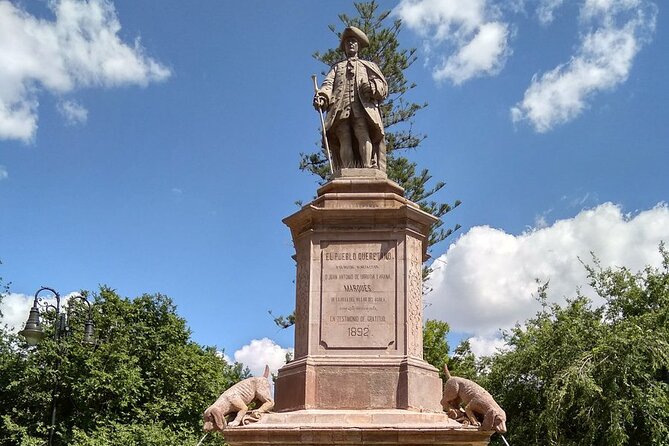
Historic Downtown in Querétaro, Mexico is truly an architectural gem that mesmerizes visitors with its stunning colonial buildings and rich history.
Queretaro’s historic downtown is a treasure trove of architectural marvels and hidden gems. Exploring the streets of this city is like embarking on a historical journey through Queretaro’s colonial past.
The buildings in the historic downtown area showcase a blend of Spanish and indigenous influences, creating a unique and captivating atmosphere. From the iconic aqueduct to the ornate facades of the churches and palaces, every corner of the historic center tells a story of the city’s vibrant past.
As visitors wander through the cobblestone streets, they can uncover the secrets of Queretaro’s colonial era and gain a deeper appreciation for the city’s cultural heritage.
Interested in history? More San Miguel de Allende historical sites we've covered
The Aqueduct: A Symbol of Queretaro
As visitors journey through Queretaro’s historic downtown, they’re captivated by the architectural marvels and rich history that define the city, and at the heart of it all stands the iconic Aqueduct, a symbol of Queretaro’s past and present.
The aqueduct, with its impressive structure and historical significance, is a testament to the city’s engineering prowess and cultural heritage. Built in the 18th century, the aqueduct stretches over 1,280 meters and consists of 74 arches, showcasing exquisite colonial architecture. Its construction was a remarkable feat, as it provided a reliable water supply to the city.
Today, the aqueduct isn’t only admired for its architectural significance but also for the conservation efforts that have preserved this iconic symbol of Queretaro’s history.
Temples and Churches: Religious Heritage
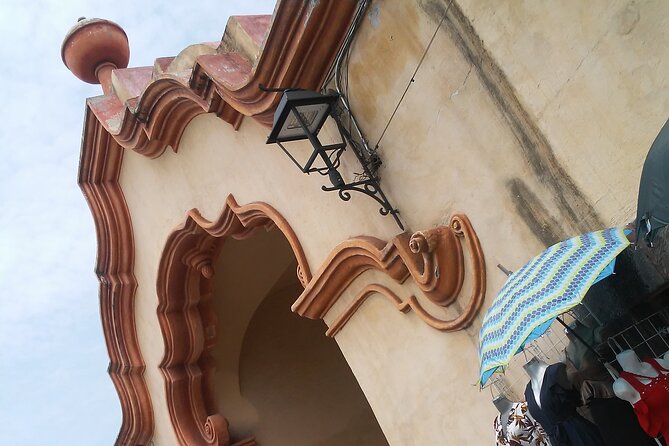
Queretaro’s religious heritage is showcased through its magnificent temples and churches, reflecting the city’s deep spiritual significance. Exploring Queretaro’s religious architecture allows visitors to enjoy the rich history and cultural traditions of the region.
Here are some notable features:
Templo de Santa Rosa de Viterbo: This Baroque-style church is a stunning example of colonial architecture, with its intricate facade and ornate interiors.
Templo de San Francisco: Known for its iconic pink towers, this Franciscan church is a symbol of Queretaro’s religious devotion.
Templo de la Congregación: This 18th-century temple boasts a blend of Baroque and Neoclassical styles, featuring beautiful frescoes and a grand altarpiece.
These temples and churches not only serve as places of worship, but also as living testaments to Queretaro’s history and cultural identity. Exploring them offers a glimpse into the city’s deep-rooted religious heritage.
Museums: Unveiling Queretaro’s History
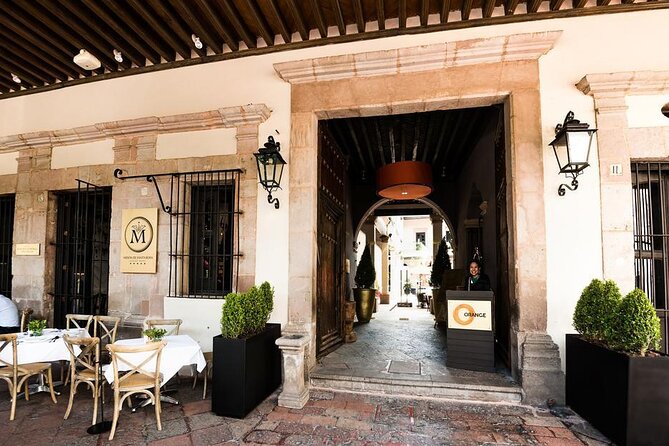
Unveiling the layers of Queretaro’s captivating history, the museums of this colonial city offer a captivating journey through time.
Queretaro’s museum scene is a treasure trove of artistic and cultural heritage, allowing visitors to explore the rich tapestry of the city’s past.
From the Museo de la Ciudad, which chronicles Queretaro’s evolution from pre-Hispanic times to the present day, to the Museo Regional, which showcases the region’s archaeology and ethnography, each museum provides a unique perspective on the city’s history and culture.
Art lovers can marvel at the Museo de Arte de Queretaro, home to a diverse collection of Mexican art, while history enthusiasts can explore the Museo de la Restauración de la República, which tells the story of Queretaro’s role in the Mexican Revolution.
With their engaging exhibits and informative displays, Queretaro’s museums truly bring the past to life.
Jardin Zenea: A Picturesque Plaza
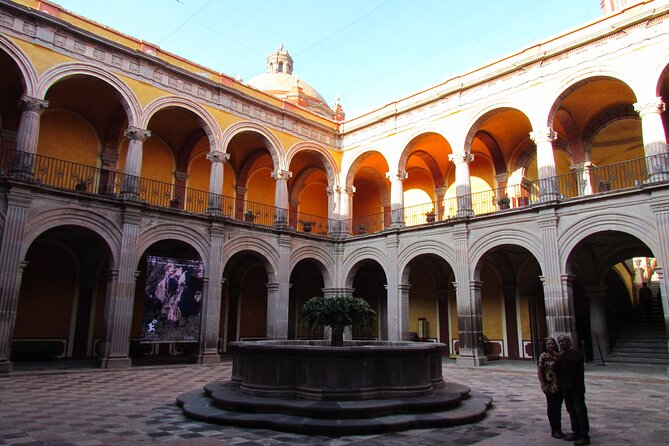
Nestled in the heart of Queretaro, Jardin Zenea beckons visitors with its picturesque charm and vibrant atmosphere. This iconic plaza is a true representation of Queretaro’s colonial charm and is a must-visit for anyone seeking to enjoy the city’s rich history and culture.
Here is what awaits you at Jardin Zenea:
- Lush greenery and colorful flowers that create a serene and inviting ambiance.
- Charming benches and fountains where visitors can relax and soak in the beauty of the surroundings.
- Local vendors selling delicious street food, allowing you to indulge in Queretaro’s culinary traditions.
As you explore the plaza, you’ll be captivated by the fusion of old-world elegance and modern vibrancy. Jardin Zenea isn’t just a picturesque plaza, but a living testament to Queretaro’s past and present, making it a must-see destination for any traveler.
Cerro De Las Campanas: Where History Unfolds
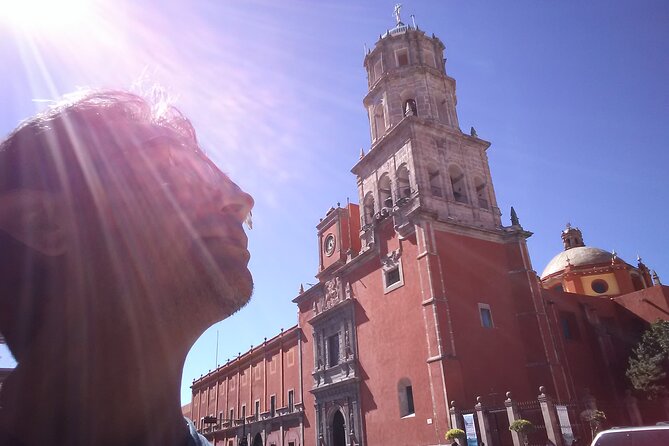
As you continue your exploration of Queretaro’s captivating colonial charm, a significant historical site awaits you at Cerro De Las Campanas, where the unfolding of history takes center stage. Cerro De Las Campanas, which translates to "Hill of Bells," holds great historical significance for Mexico. It was here that the Emperor Maximilian and his generals were executed in 1867, marking the end of the French intervention in Mexico. Today, visitors can walk through the Cerro De Las Campanas National Park and witness the remains of the execution site, as well as a monument dedicated to this pivotal moment in Mexican history. Apart from its historical significance, Cerro De Las Campanas also offers panoramic views of the surrounding Queretaro landscape, allowing visitors to appreciate the beauty of the region while reflecting on its rich past.
| Historical Significance | Panoramic Views |
|---|---|
| Execution site of Emperor Maximilian | Stunning views of Queretaro |
| Monument commemorating the end of the French intervention | Vantage point to appreciate the region’s beauty |
| Symbolic representation of Mexico’s struggle for independence | Serene atmosphere for reflection |
Cerro De Las Campanas serves as a reminder of the resilience and determination of the Mexican people, making it a must-visit destination for history enthusiasts and those seeking a deeper understanding of Mexico’s past.
Casa De La Corregidora: a Revolutionary Landmark
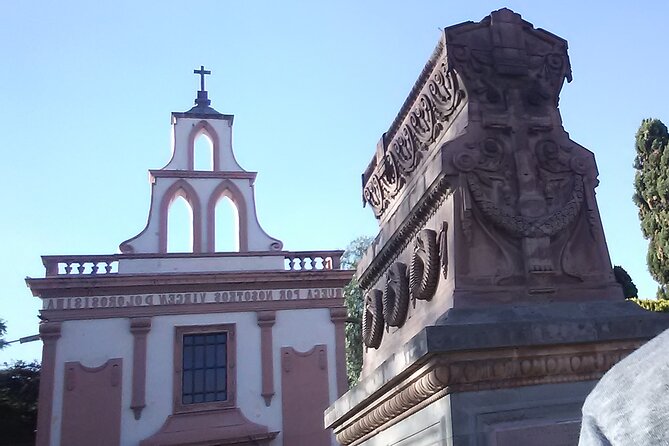
Casa De La Corregidora stands as a revolutionary landmark in Queretaro, showcasing the pivotal role it played in Mexico’s fight for independence. This historic building holds great significance in the country’s history and serves as a testament to the bravery and determination of the Mexican people.
Here are some key architectural details that make Casa De La Corregidora a must-visit destination:
The building features a stunning colonial architectural style, with intricate details and ornate facades that reflect the grandeur of the era.
The interior of the house is equally impressive, with beautifully decorated rooms and period furniture that transport visitors back in time.
The Casa De La Corregidora also houses a museum that exhibits artifacts and documents related to the independence movement, offering visitors a deeper understanding of its historical importance.
Visiting Casa De La Corregidora allows one to enjoy the rich history of Mexico and gain a newfound appreciation for the bravery and sacrifices made by those who fought for independence.
El Cerrito: Ancient Pyramids in Queretaro
After exploring the colonial splendor of Casa De La Corregidora, visitors to Queretaro can now uncover the ancient mysteries of El Cerrito, home to remarkable pyramids that date back centuries.
El Cerrito, meaning ‘the small hill’ in Spanish, is an archaeological site located just outside the city of Queretaro. The site features several pyramids that were built by the Otomi people, an indigenous group that inhabited the area before the arrival of the Spanish. These pyramids hold great cultural significance, providing a glimpse into the rich history of Queretaro.
For those interested in exploring El Cerrito, it’s recommended to hire a guide who can provide insight into the significance of the site and its structures. Plus, visitors should come prepared with comfortable walking shoes and plenty of water, as the site requires some hiking to fully explore.
Common Questions
What Are the Entry Fees to the Museums in Queretaro?
The entry fees to the museums in Queretaro are not mentioned in the provided information.
How Long Does the Tour Typically Last?
The tour typically lasts around four hours, giving visitors ample time to explore the colonial architecture and history of Queretaro. The best time to take the tour is in the morning, starting at 9:00 AM.
Is the Tour Available in Languages Other Than English?
Yes, the tour is available in multiple languages. They offer language options for the Queretaro tour, making it accessible to a wider range of travelers. Plus, the duration and schedule availability of the tour are convenient for many.
Are the Snacks and Brunch Included in the Tour Price?
Yes, the tour includes snacks and brunch. Travelers can enjoy these meals while exploring Querétaro’s colonial architecture and history. Dietary restrictions can be accommodated upon request.
How Can I Book the Tour and What Is the Cancellation Policy?
To book the tour, visitors can use the online booking process. The cancellation policy allows for refunds if cancellation is made within a certain timeframe. More details about the refund policy can be found on the tour website.
The Sum Up
To sum it up, Queretaro: Colonial Architecture and History offers a captivating journey through time, showcasing the city’s stunning colonial architecture, historical landmarks, and vibrant local culture.
From the breathtaking views at Mirador de los Arcos to the wealth of artifacts at Museo de la Ciudad, Queretaro is a treasure trove of architectural wonders and hidden gems.
This article ensures that readers are well-informed about the top-rated experiences and amenities available, making it a must-read for anyone seeking to discover the captivating essence of this Mexican gem.
More Historical Tours in San Miguel de Allende
- Taste of Europe in Mexico: History and Flavors of Artisan Cheese
- Tour of the Tradition and History of Cheese and Wine in Querétaro
- San Miguel de Allende: Historic Center ATV Tour
- Panoramic Historic Tour
- San Miguel Allende’s History Through Gastronomi and Architecture
- The San Miguel, Historical Walking Tour,
More Tour Reviews in San Miguel de Allende
Looking for something different? Other San Miguel de Allende activities we've written about
- Tour to Guanajuato with Transportation and Guide
- 3 or 5 Course Menu + Wine Pairing + Tour @Local Winery
- Cañada de la Virgen Archeological Site Tour
- Atotonilco A Devotional and Artistic Legacy of San Miguel
- Art tour through artists’ workshops around San Miguel de Allende
- Art Tour in San Miguel de Allende
- Escape Stress Deep Tissue Massage San Miguel de Allend
- Taste of Europe in Mexico: History and Flavors of Artisan Cheese
- Day of the Dead Walking Tour in San Miguel de Allende
- Dolores Hidalgo & Sanctuary of Atotonilco
- Day of the Dead Tour in San Miguel
- Explore the Underground Art and Nightlife of San Miguel
